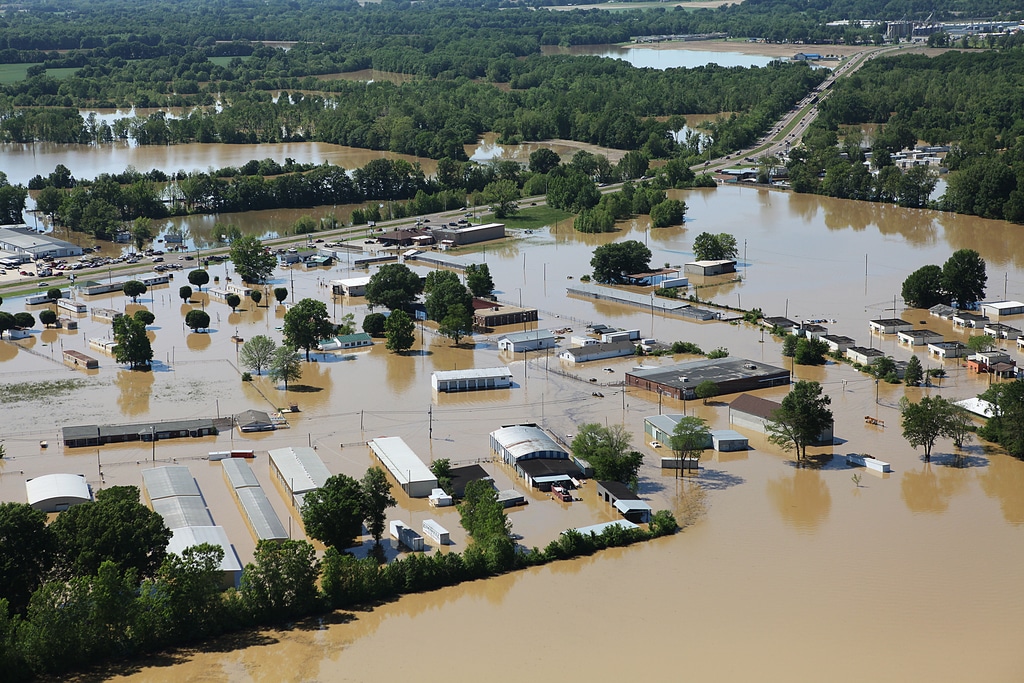Research demonstrates that the price of climate inaction far outweighs the economic impact of the Paris Agreement and its subsequent mitigating policies. Yet today’s path from policymaking to implementation remains paved with obstacles as declarations of intent do not always translate into real-world action.
—
The Paris Agreement is the first universal and legally binding agreement on climate change. It includes stipulations driving a progressive reduction of global greenhouse gas emissions and, for the first time, established common principles valid for all countries.
The Paris Agreement’s mission is to limit global warming well below 2C compared to pre-industrial levels and, ideally, the temperature increase to 1.5C within this century. Parties aim to reach the global peak of greenhouse gas emissions as soon as possible in order to achieve a balance between emissions and removals in the second half of the century while recognising that developing countries may take longer. Every five years, signatories are called to make their pledges regarding emissions reduction (Nationally Determined Contribution, NDC). NDCs must be quantifiable, with each subsequent goal representing a progression beyond the previous one. While the implementation of national reporting systems and adaptation policies is legally binding, the achievement of NDCs is not.
In addition, the Paris Agreement does not establish new obligations regarding climate finance. However, wealthier nations are invited to support lower-income countries in reducing emissions and improving resilience towards the impact of climate change. Existing efforts toward this end have yielded mixed results. During the 2009 United Nations Climate Change Conference in Copenhagen, the world’s richest countries pledged USD$100 billion per year in climate finance to emerging economies or poorer nations starting in 2020. According to a cursory analysis, developed countries likely failed to meet their climate finance commitment for the year 2020. The 100 billion mark is likely to be met only by 2023.
A large volume of public and private climate finance flows is required to support a long-term green transition. According to the UN, annual adaptation costs in developing countries alone are estimated at USD$70 billion, with the expectation of reaching 140-300 billion in 2030 and 280-500 billion in 2050. This is the price that civil society must pay to reverse the catastrophic path that humanity has taken since the mid-20th century; climate inaction would ultimately carry greater financial costs, alongside severe repercussions on the environment and human health, than corresponding climate mitigation policies and the overall economic impact of the Paris Agreement.
Ten of the most destructive weather events of 2021 had a combined cost of USD$170 billion and, more importantly, took the lives of thousands of people. There is almost total consensus among experts that human activities are unequivocally the main driver of climate change. Significant efforts are needed to reach the long-term temperature goals set by the Paris Agreement. However, questions remain on whether this science-based, yet politically motivated approach constitutes the economically optimal policy pathway to mitigate global warming.

Work by a research group affiliated with the Potsdam Institute for Climate Impact Research affirms the economic validity of the Paris Agreement’s framework. Researchers utilised computer simulations of the Dynamic Integrated model of Climate and the Economy (DICE), pioneered by US Nobel Laureate William Nordhaus, to provide a macroeconomic assessment of the emission reduction efforts associated with the Paris Agreement. The researchers expand on previous studies conducted by Marshall Burke and co-authors, which aim to provide estimates of warming-induced economic growth impact. They incorporate such estimates into the integrated assessment model (IAM) called DICE, providing an inter-temporal analysis that takes into consideration uncertainties regarding the damage curve, climate sensitivity, socioeconomic prospects, and mitigation costs. Following thorough testing, the study concludes that the 2C target as set by the Paris Climate Agreement yields the optimal pathway till the end of this century from a cost-benefit perspective.
It is important to note that these types of models will always have methodological shortcomings, even acknowledged by the authors themselves. For instance, unprecedented variation in climatic extremes may require more extreme mitigation efforts. Furthermore, the benefits of climate change mitigation have been measured solely in terms of Gross Domestic Product (GDP), ignoring non-monetary losses such as loss of life and biodiversity. The distributional elements of global warming’s damages and mitigation costs have also been neglected and – as the authors suggest –further studies should incorporate region-specific empirical estimates.
You might also like: Climate Finance: Are the Rich Nations Doing Enough?
The Paris Agreement brought the environmental crisis to the centre of the global agenda. The UN Climate Change Conference in Glasgow (COP26) held in November 2021 was perhaps the second most significant global climate event since 2015. The conference ended after two weeks of negotiations between attending parties, who agreed upon aiming towards limiting global warming to 1.5°C compared to pre-industrial levels. According to climate scientists, there is a significant difference in terms of impact brought by 1.5°C and 2°C global temperature increases. Losses in biodiversity, extreme heat, melting Arctic Sea ice, and rising sea levels are among the devastating consequences of climate change that will substantially accelerate with a rise of 2°C. Despite scientific evidence showing that crossing the 1.5°C thresholds will have devastating repercussions on human livelihoods and ecosystems, COP26 climate pledges would only hold warming to just below 1.8C by the end of the century.
While a 0.3C difference may seem small, additional warming could have calamitous consequences and even lead to the irreversible disintegration of certain ecosystems. With national pledges made during COP26 proving insufficient, further commitments are crucial to ensure the preservation of vulnerable areas and mitigation of costs from climate-related disasters. Additionally, these new commitments have not yet turned into credible policy actions. Nations can no longer delay in curbing their greenhouse gas emissions and must lay out concrete plans to meet their promised climate goals.
Holding warming to 1.5C is aspirational and requires drastic transformations to our energy system, vehicle usage, and technological deployment means. Although there seems to be an almost global consensus on the urgency of climate change, domestic politics pose a significant obstacle to ambitious measures. Concerns regarding energy shortages, economic decline, and related social disruptions are preventing governments from taking immediate action. While legitimate, these concerns result in a short-sighted approach to the climate crisis. Governmental procrastination and hesitant implementation of transition measures at the local level are hindering our global capacity to mitigate and adapt.
Despite any economic impact the Paris Agreement might bring, if adhered to properly, the Paris Agreement represents the most viable economic option to mitigate climate change. However, the consequences associated with warming exceeding 1.5°C go far beyond GDP growth rates. While we must identify and implement more ambitious climate policies, cooperation among policymaking institutions is needed to ensure a just and equitable transition aimed at generating new sources of renewable jobs and income. Additionally, governments must establish social protection systems to support those inevitably affected by both climate- and mitigation-induced losses. Such policies would also serve to address the most human aspects of climate scepticism: anxiety over one’s own interests.
Featured image by: David Fine/FEMA


















